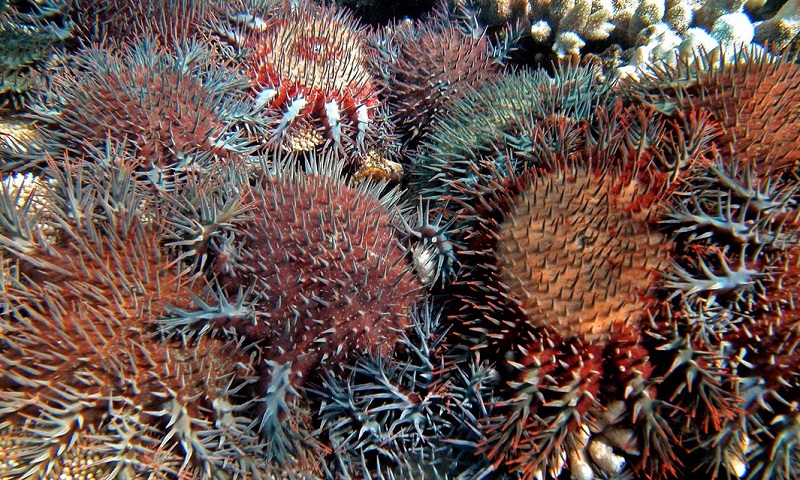Scientists sniff out way to lure reef-killing crown-of-thorns starfish to their death

Researchers trying to protect the Great Barrier Reef fabricate environmentally safe bait by harnessing the pheromones the marine pests use to communicate. Marine biologists may have devised a new way to protect the Great Barrier Reef after decoding the pheromones of the coral-eating crown-of-thorns starfish. Researchers say the discovery can be used to create pheromone lures that attract the marine pest in large numbers and make them easier to remove. Crown-of-thorns starfish make coral more susceptible to bleaching, weather damage and the effects of climate change, and have been blamed for half of all coral decline over the past 30 years, according to the Great Barrier Reef Marine Park Authority. “These starfish feast on the coral and leave it bleached white and vulnerable to destruction in heavy storms,” says report author Professor Bernard Degnan. “But now we’ve found the genes they use to communicate, we can begin fabricating environmentally safe baits that trick them into gathering in one place.” Researchers from Australia and Japan worked together to become the first to decode the starfish’s pheromones. They say their solution is cheaper and more effective than current methods, which usually rely on divers picking off the starfish by hand. According to the report, published in the journal Nature, crown-of-thorns outbreaks have a higher impact on reef health than coral bleaching and disease combined. “No one has done anything like this,” said Degnan, from the University of Queensland. “We created an aggregation event in an aquarium, then we sequenced the proteins in the plume that it produced.” He said it would be three to five years before the baits could be implemented in the field. “The report was phase one. Phase two is fabricating the baits, and once we have them, we’ll test them on a small scale in an aquarium. “Up until now, many millions of dollars have been spent on trying to control crown-of-thorns on a local level. We want these baits to be deployed all around the reef. Instead of a local solution, we’re talking a regional-scale solution.” In 2015, the Queensland University of Technology trialed an autonomous robot that would inject individual starfish with a lethal toxin. Researchers at James Cook University also found that the starfish could be killed with 100% vinegar. The report’s authors sequenced the genome of crown-of-thorns specimens collected from the Great Barrier Reef and Okinawa, then conducted experiments by releasing the pheromone in an aquarium environment. “We had a starfish at the base of a giant Y-shaped tank, and if you let plain seawater run in, it basically just sits there,” said Degnan.

